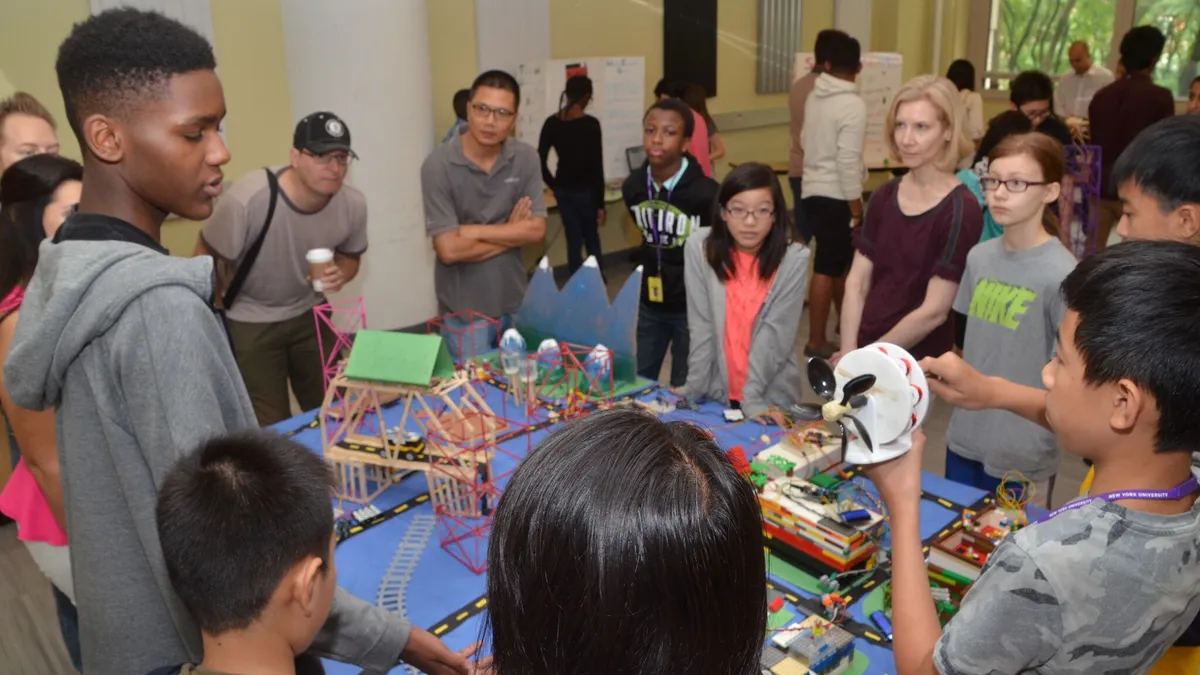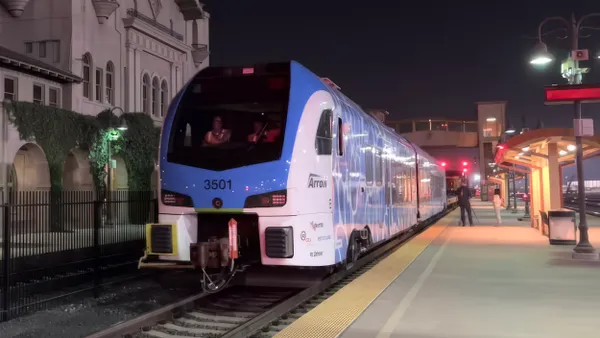On a recent August afternoon in Brooklyn, dozens of summer camp students swarmed around cities of their own creation. Sure, they were mostly built out of Legos, small sensors and cardboard, but they were thoughtfully laid out with carefully designed infrastructure. One such city was Meracia, a name that is less exotic than first appearance.
"It’s actually just America with all the letters scrambled," said Elizabeth, 12, who worked on Meracia.
Elizabeth explained that Meracia was built in the shape of a hexagon so everything can be equally distributed. The solar panels were built with sensors and motors that can actually move to get more sun, and three main Wi-Fi towers triangulated around the city’s downtown hub with smaller towers to fill out the rest of the city.
Elizabeth said she has lived in New York her entire life but didn’t know how cities work until starting the Science of Smart Cities (SoSC) program at the NYU Tandon School of Engineering’s Center for K-12 STEM Education this summer. Now she sees how the city moves and functions around her — and has some thoughts on it.
"I wanted to find ways to make it better," she said.
The SoSC program has 75 students taught by two undergraduate or graduate student instructors, along with high school interns. SoSC is part of a bigger summer project by Tandon called STEMNow that educates hundreds of teachers and students. Workshops, classes and labs are conducted to immerse middle and high school students in the STEM subjects – science, technology, engineering and math.
"It’s very unfamiliar to these kids," said Ben Esner, the director of K-12 STEM Education at NYU Tandon. “They are open to it, they just don’t get the chance to build it.”
The program is held at Tandon’s downtown Brooklyn campus and includes guest lectures and field trips, as well as opportunities for students to work with actors from the Irondale Theater Company to develop their public speaking and presentation skills. After four weeks focused on urban infrastructure, transportation, energy and wireless communication, the program culminates with students building their own smart cities and putting on a public expo to show them off.
The expo highlights the smart city creations, accompanied by three-panel science fair-type boards and students waiting eagerly to explain systems like rooftop farms, smart grids and vertical farms. Kristen, 11, who worked on a city dubbed “Smartopolis,” said she has plenty of ideas for how to improve not only New York, but all cities.
"We could have cleaner subways, cleaner air, the buildings could be be smarter," she said.
The high school smart city program is called Innovation, Entrepreneurship and the Science of Smart Cities (ieSoSC). Also taught by NYU Tandon undergraduate and graduate students, teams are asked to create smart city devices or come up with ideas that offer solutions to urban challenges using tools like cloud services and sensors. About half of the ieSoSC students are graduates of SoSC.
Both SoSC and ieSoSC are free for students, with funding coming from National Grid, Consolidated Edison and Northrop Grumman Corporation. The course work changes every year, which Esner said helps to keep the work relevant to the real world.
"These technologies don’t stand still," Esner said.
SoSC is the first summer camp of its kind, but won’t be lonely for long. Carnegie Mellon had a program for five middle school and high school students this summer funded by a nearly $50,000 grant from the National Science Foundation — and it's possible that similar programs will flourish.
Already, over 80% of American children live in cities. These young residents know the pain points of living in a metropolitan area, whether that’s bad public transit or limited green space. Their experiences make them subject matter experts and empowers them to think big.
"They know the things they’d fix," Esner said.
The summer programs at Tandon also tackle the gender and opportunity gaps in STEM. Nationwide, only a quarter of the labor force in STEM fields is female, according to a recent study by research firm Frost & Sullivan. Female students make up nearly 60% of STEMNow participants. About 40% come from households that have none or only one parent who went to college.
Esner said he has spoken with other interested parties about building similar smart city programs. In fact, Tandon already expanded its reach internationally. In 2014, it took the SoSC program to the National University of Malaysia, which now teaches a similar program half way around the world.
“There is an amount of universality to it,” Esner said. “This is something replicable."










